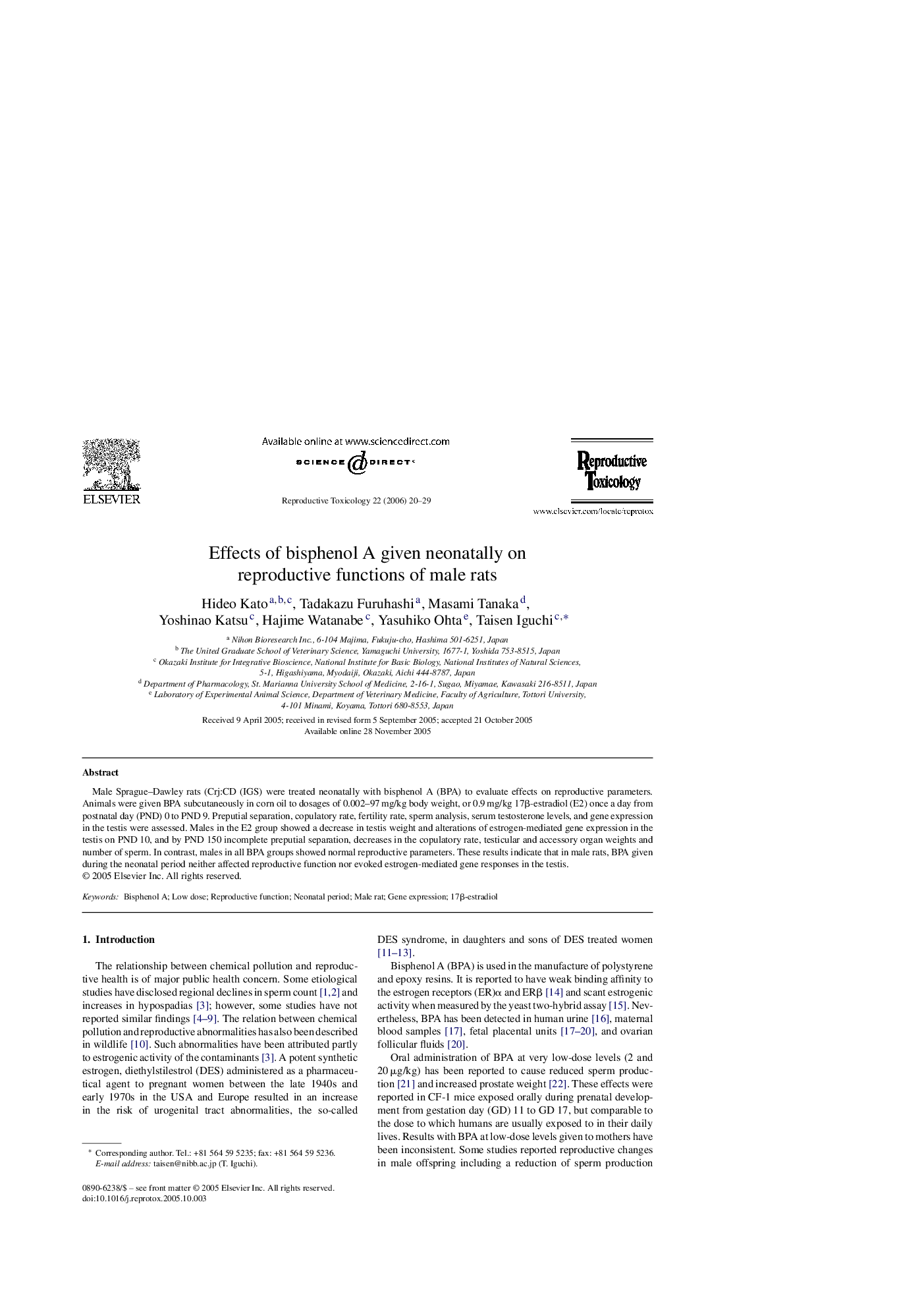| Article ID | Journal | Published Year | Pages | File Type |
|---|---|---|---|---|
| 2595353 | Reproductive Toxicology | 2006 | 10 Pages |
Male Sprague–Dawley rats (Crj:CD (IGS) were treated neonatally with bisphenol A (BPA) to evaluate effects on reproductive parameters. Animals were given BPA subcutaneously in corn oil to dosages of 0.002–97 mg/kg body weight, or 0.9 mg/kg 17β-estradiol (E2) once a day from postnatal day (PND) 0 to PND 9. Preputial separation, copulatory rate, fertility rate, sperm analysis, serum testosterone levels, and gene expression in the testis were assessed. Males in the E2 group showed a decrease in testis weight and alterations of estrogen-mediated gene expression in the testis on PND 10, and by PND 150 incomplete preputial separation, decreases in the copulatory rate, testicular and accessory organ weights and number of sperm. In contrast, males in all BPA groups showed normal reproductive parameters. These results indicate that in male rats, BPA given during the neonatal period neither affected reproductive function nor evoked estrogen-mediated gene responses in the testis.
